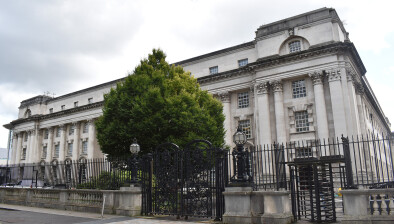NI: Court of Appeal: Mid-Ulster District Council successfully challenge DoE’s approach to calculating domestic rates
 Mid-Ulster District Council have successfully appealed a finding of the High Court that the correct approach to calculating domestic rates was a matter at the discretion of the Department of Environment (DoE).
Mid-Ulster District Council have successfully appealed a finding of the High Court that the correct approach to calculating domestic rates was a matter at the discretion of the Department of Environment (DoE).

About this case:
- Court:Court of Appeal
The DoE submitted that the conversion factor applied to the capital value in each council should be an average of the Northern Ireland conversion factors. Allowing the appeal, the Court of Appeal agreed with Mid-Ulster District Council that that the conversion factor applied to the capital value in each council should be the individual conversion factor set out in the Rates (Making and Levying of Different Rates) Regulations (NI) 2006.
High Court
In the High Court, Mid-Ulster District Council sought judicial review of the determination by the DoE of the Rates Support Grant payable to it for the financial year 2015/2016.
Mid-Ulster District Council and the DoE agreed that in order to determine the amount of Rates Support Grant it is necessary to apply a conversion factor to the capital value penny rate product for domestic properties to make it comparable to the Net Annual Value penny rate product for non-domestic properties.
The issue was whether to use an individual conversion factor specific to each council, or an average conversion factor as was used by the DoE.
Dismissing the application for judicial review, the trial judge concluded that either approach could have been adopted and that it was a matter for the discretion of the DoE to determine which approach to follow.
Court of Appeal
Mid-Ulster District Council appealed the decision of the trial judge. In the Court of Appeal, both parties submitted that the trial judge was in error and that the issue should be determined one way or the other as a matter of statutory construction.
The issue for determination in the Court of Appeal was the distribution of the available sum.
The Rates (Northern Ireland) Order 1977 was amended by the Rates (Making and Levying of Different Rates) Regulations (NI) 2006 to provide for the making and levying of different regional and district rates on the rateable NAV of hereditaments and the rateable capital values of hereditaments.
In the Court of Appeal it was explained that the DoE’s ‘means for the distribution of the resources element of the general grant was based on a “wealth minus needs” formula designed to ascertain a district council’s requirement for funding support relative to other districts and was calculated on the products of the rates of one penny in the pound’ – i.e. gross penny rate product (GPRP).
The DoE was also required to determine the amount of Rates Support Grant payable to a council as calculated in accordance with its share of the Northern Ireland population.
The relevant legislation provides that where the ratio of the council’s GPRP to the Northern Ireland GPRP is less than the ratio of the council’s population to the Northern Ireland population the difference constitutes a negative variance.
Rates Support Grant is payable to all councils with negative variances in proportion to the extent of such variances.
The legislation makes no provision for a conversion factor in the determination of the GPRP.
The capital values of the domestic properties are clearly assessed on a different basis from the Net Annual Value product for non-domestic properties and the result is that the sum produced from the capital values from an estimated penny product of domestic hereditament is 70 times greater than the sum produced from non- domestic hereditaments.
Both parties agreed that to add the capital values product to the Net Annual Value product undermines the purpose of the legislation which was to give appropriate weight to the influence of both products in the assessment of the wealth of the district council.
Mid-Ulster District Council contended that the conversion factor applied to the capital value in each council should be the individual conversion factor set out in the Rates (Making and Levying of Different Rates) Regulations (NI) 2006.
The DoE submitted that the conversion factor applied to the capital value in each council should be an average of the Northern Ireland conversion factors.
Allowing Mid-Ulster District Council’s appeal, the Court of Appeal concluded that:
- it is necessary and proper to imply a conversion factor to the capital rateable values for the purpose of determining each council’s wealth;
- there is little assistance to be gained in the ascertainment of the correct conversion factor from the Rates Regulations (Northern Ireland) 2007;
- Mid-Ulster District Council’s position essentially follows from the implication that domestic capital values in any district council area increase at broadly the same rate as non-domestic Net Annual Values;
- The DoE’s position reflects the assumption that domestic capital values in Northern Ireland increase at a uniform rate;
- each position is tenable as a matter of policy in determining wealth;
- The statutory background provides the key to the appropriate conversion factor; and
- Mid-Ulster District Council’s position is reflected in that background and is to be preferred.
- by Seosamh Gráinséir for Irish Legal News







